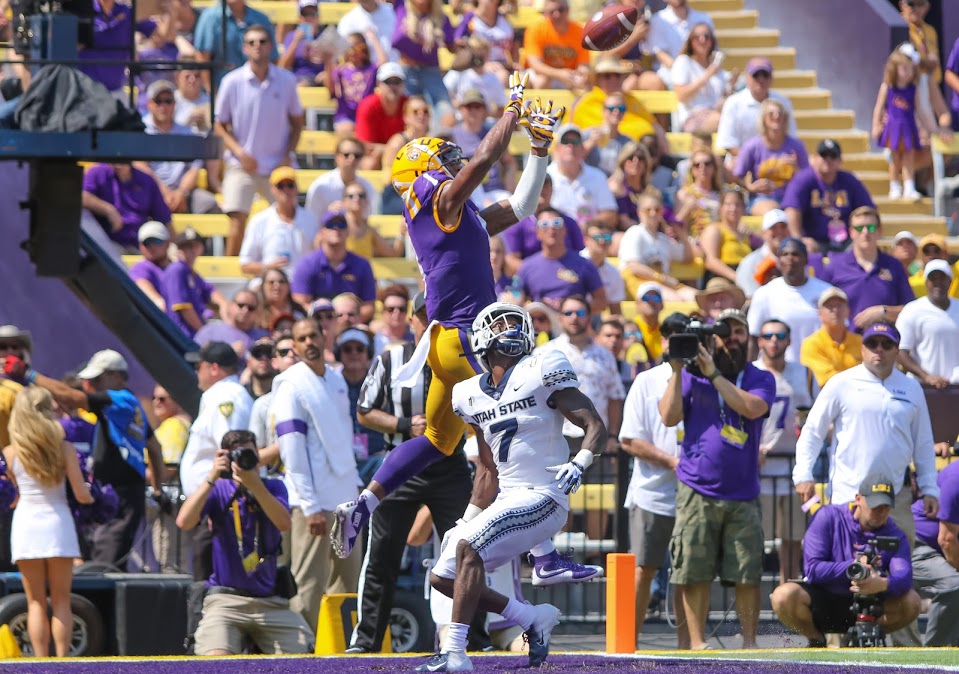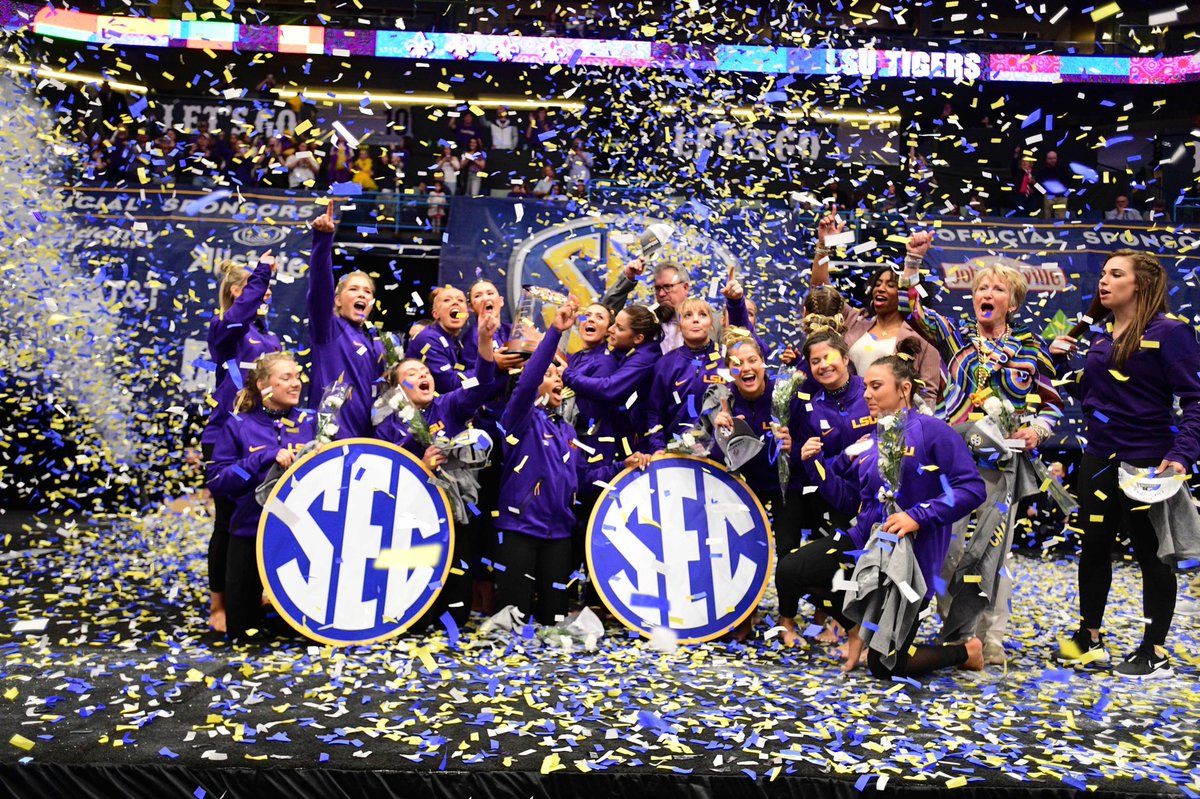
By JAMES MORAN | Tiger Rag Associate Editor
Paul Mainieri is a world-renowned tinkerer.
At no point in a season is the coach afraid to try something if he thinks it could make his team better. Sometimes it works; others not so much.
Ask him and he’ll recount the decision to flip-flop Austin Nola to shortstop and D.J. LeMahieu to second base — the latter has gone on to be a Gold Glove winner in the Major Leagues at second base — or the time he switched third basemen in the midst of the SEC Tournament on the way to Omaha.
This season has been no different. Shaped by three in-season moves Mainieri made — and one arguably even more crucial one he resisted — LSU won 11 of its final 12 SEC games to capture a sixth SEC West title under Mainieri and a share of the overall league crown at 21-9.
After a loss to Tulane on April 25, the Tigers were a middling 27-15 overall and no sure thing to host an NCAA Regional; a real longshot to claim a sixth consecutive national seed. LSU closed on a torrid 12-2 tear to reach the 20-win plateau in the conference for the fourth time under Mainieri. LSU earned a national seed and advanced to the College World Series in each of the previous three.
LSU has made a habit of finishing fast under Mainieri, in no small part because of his willingness to continue tinkering until the optimal lineup, starting rotation and bullpen mix emerge.
It doesn’t seem like he’s tinkered as much this season because the starting rotation has remained the same since opening weekend, but before LSU heads to Hoover in hopes of nailing down a national seed, here’s a bit of reflection on the moves that shaped LSU’s 17th SEC Championship season.
Move 1 | Inserting Zach Watson in center field | Date: March 9
Nolan Cain remembers feeling his stomach drop.
“Ugh oh,” LSU’s assistant coach thought to himself. “That one is for sure in the gap.”
Only it wasn’t, time and time again.
Watson has been a revelation in center field since taking over during the final weekend of non-conference play. His effortless range in every direction has saved countless extra-base hits and made LSU’s outfield defense, an early-season issue, a quantifiable strength.
Nobody can replicate what Andrew Stevenson did defensively for LSU in center field. He’s the gold standard and well on his way to the Big Leagues on the strength of his ability to track and catch the baseball alone.
But Watson, a dead ringer for Mark Laird right down to the No. 9 jersey, has been clocked at a laser-timed 6.47 seconds in the 60-yard dash. On the professional scouting scale, which grades from 20-80, Watson’s speed is a 70 or 75 on the basis of that time, considered above average for a big leaguer.
The freshman’s explosive speed allows him to outrun his mistakes in center and get to balls that appear destined for the wall off the bat. Even nagging groin and calf injuries didn’t slowed him down.
His insertion into the lineup mirrors Mikie Mahtook’s back in 2008. Mainieri noted at the time that he’d felt since fall ball that Watson’s athleticism would make an impact at some point this season, but felt it necessary to give veterans Beau Jordan and Brennan Breaux first crack at starting outfield spots.
Watson has also emerged as a force offensively as his rookie season has progressed. Between his speed and “wiry” strength — listed at just 166 pounds, he belted four home runs this season — Watson has become a second leadoff hitter of sorts for LSU in the No. 9 hole.
Not unlike Cole Freeman hitting ninth last season, LSU’s offense has been at its most balanced when Watson has produced at the bottom of the order. He finished as LSU’s second-leading hitter in SEC play at .298, trailing only Greg Deichmann (.303).
“If you want to be a good offensive team, you’ve got to be tough one through nine,” Mainieri said after LSU’s sweep of Auburn. “If you have a good nine hole hitter, than you have a good offensive team.”
Move 2 | Moving Zack Hess to the Bullpen | Date: April 3
While most of the attention focused on a slumping offense, most of LSU’s early-season losses could actually be traced back to a leaky, short-staffed bullpen.
Hampered by injuries to Doug Norman (Tommy John Surgery) and Hunter Newman (Back), that bullpen surrendered leads in five of LSU’s first 10 losses this season.
There’s no question Newman’s hasty return was a much-needed stroke of good fortune, but Mainieri’s controversial decision to move Hess from midweek starter to setup man transformed LSU’s relief corps into a force to be reckoned with.
It wasn’t an easy decision after weeks of talk about how LSU had finally developed a third and fourth starters, a bugaboo in past years. And weeks of mounting midweek defeats followed, drawing the ire of an impatient fan base, but LSU wouldn’t have won the SEC without Hess in the bullpen.
The freshman’s overall stuff improved and the numbers he put up across nine SEC appearances speak for themselves. Hess posted a 3-0 record and one save while pitching to a 1.15 ERA in 15.2 innings. He struck out 21 while opponents hit just .179 against him.
Combined with Newman, the steady veteran closer, LSU’s top two late-inning guys have allowed just three earned runs across 28 innings of work in SEC play. There’s at least four league games LSU wouldn’t have won without Hess’ efforts in relief.
Move 3 | Nick Coomes supplanting Jake Slaughter at first base | Date: April 11
This was a more subtle move than the outfield shakeup or reassigning Hess, but one that proved pivotal nonetheless.
LSU spent months trying to find a right-handed bat to provide some modicum of protection and production behind Deichmann in the order. Nobody came close to filling the void left when All-SEC DH Bryce Jordan went down in preseason camp with a knee injury.
Eventually Coomes hit his way into the conversation, but Mainieri had to find a position for the backup catcher — more on that below. That’s when Slaughter, the struggling freshman first baseman, committed two defensive lapses that created such an opening.
The coach told Coomes to give first base a shot before the Wally Pontiff Jr. Classic. He’s been there ever since.
Coomes finished SEC play hitting .284 with 11 RBI and a team-high seven doubles. He’s also proved himself to be a more-than-serviceable first baseman defensively. His emergence solidified LSU’s regular starting unit.
Move 4 | Not benching Mike Papierski
Sometimes the best moves are the ones you don’t make.
Calls to bench Papierski crescendoed as his batting average hoovered around the Mendoza Line (.200) for much of the season. With the offense as a whole struggling, many outside the program wanted Coomes or Jordan Romero, considered more powerful hitters, inserted behind the plate.
Aside from the series finale against Arkansas, the last league game Papierski didn’t start, Mainieri resisted the urge to trade defense for offense behind the plate. Here’s why.
LSU’s pitchers have total faith in his ability to block balls in the dirt and he shuts down an opposing running game with his arm. Papierski threw out 21 would-be base stealers this season, three more than any other backstop in the SEC.
“The one thing about Michael that I admire so much is that he understands the importance of his position defensively,” Mainieri said last week. “So no matter what he does offensively, he’s going to show up and catch a good game.
“He’s going to do all the dirty work that you need to be a good team. When he hits, it’s a bonus.”
As one assistant coach put it, despite the fact that 99 percent of people wouldn’t understand why, a case can be made Papierski had been LSU’s MVP this season. Any offense the switch hitter provided along the way would literally be gravy.
Lately there’s been lots of gravy.
Papierski has gotten hot down the stretch for the second year in a row. Over LSU’s last four SEC series, he’s hit .302 (13-for-43) with four home runs, 12 RBI, nine runs scored and drawn 12 walks. LSU went 11-1 during that span, with hit coming through with two game-winning hits.
On the strength of that surge, Papierski finished SEC play hitting .280 and led the team with an on-base percentage of .460. His four home runs and .467 slugging percentage in league play are second only to Deichmann.
That has LSU in position to be a national seed again. It could also earn him some extra money when the MLB Draft rolls around next month.




Be the first to comment